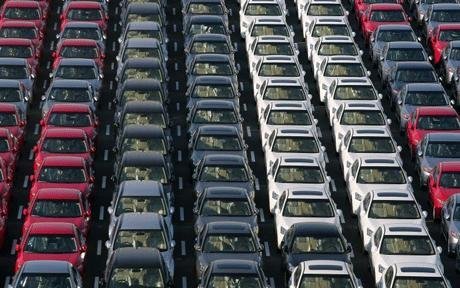New-Car Smell is Bad for You

Results of a study by The Ecology Centre, based in Ann Arbor, Michigan, suggest Honda and Toyota are the top performers while Mitsubishi, Kia and Chrysler are among the worst offenders.
More than 200 late-model cars were tested for gas-releasing chemicals from parts such as their steering wheels, fascia, armrests and seats for the fourth consumer guide to toxic chemicals in cars
The emitted gases contribute to the new-car smell and The Ecology Centre attributes a number of acute and long-term health concerns to them.
Toxic mix
Jeff Gearhart, the centre's research director, said: "Vehicle interiors contain a unique cocktail of hundreds of toxic chemicals that off-gas in small, confined spaces. Since these chemicals are not regulated, people have no way of knowing the dangers they face.”
Among the chemicals are bromine, chlorine, lead and other heavy metals. Such chemicals have been linked to a wide range of health problems such as allergies, birth defects, impaired learning, liver toxicity and cancer, the Ecology Centre said.
'Chemical reactors'
The extreme air temperatures generated in a car's cabin by sunlight contribute to their levels of toxicity.
"Automobiles function as chemical reactors, creating one of the most hazardous environments in which we spend time," Gearhart added.
But the overall vehicle ratings are improving, the centre said: 17% of new vehicles have PVC-free interiors and 60% are produced without 40 brominated flame retardants – a wide range of chemicals added to materials to both inhibit their ignition and to slow their rate of combustion.
Ten best by concentration of volatile organic compounds
- 2012 Honda Civic – 55.1 kg/m3
- 2011 Toyota Prius - 65.9 kg/m3
- 2011 Honda CR-Z - 75.5 kg/m3
- 2011 Nissan Cube - 77.9 kg/m3
- 2012 Acura RDX - 88.7 kg/m3
- 2012 Acura ZDX - 88.7 kg/m3
- 2012 Audi S5 - 88.7 kg/m3
- 2011 Smart coupe 88.7 kg/m3
- 2011 Toyota Venza - 92.3 kg/m3
- 2011 Smart Passion - 94.7 kg/m3
Ten worst by concentration of volatile organic compounds
- 2012 Mini Cooper S Clubman – 340.3 kg/m3
- 2012 Volkswagen Eos - 341. 5 kg/m3
- 2011 Kia Sportage - 343.89 kg/m3
- 2011 Chevrolet Aveo - 346.3 kg/m3
- 2012 Hyundai Accent - 346.3 kg/m3
- 2011 Mazda CX-7 - 369.1 kg/m3
- 2011 Nissan Versa - 369.1 kg/m3
- 2011 Kia Soul - 372.7 kg/m3
- 2011 Chrysler 200 - 379.8 kg/m3
- 2011 Mitsubishi Outlander - 379.8 kg/m3
Nouvelles connexes


